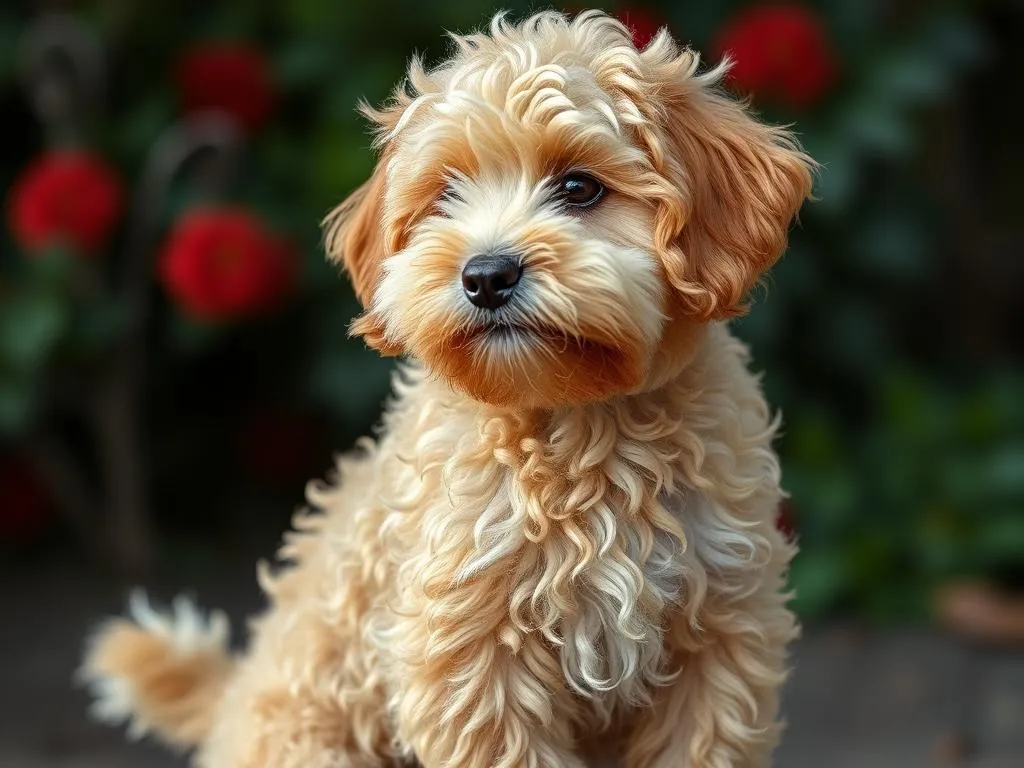
Designer dog breeds have taken the pet world by storm, captivating dog lovers with their unique blends of characteristics from their purebred parents. Among the most popular of these hybrid breeds are the Maltipoo and the Goldendoodle. Both of these breeds have gained significant attention for their appealing looks, friendly temperaments, and adaptability. Understanding the differences and similarities between these two breeds is vital for potential dog owners. This guide aims to provide a detailed comparison of the Maltipoo and Goldendoodle, covering everything from their characteristics to their care requirements.
Understanding Designer Dog Breeds
What are Designer Dog Breeds?
Designer dog breeds are a cross between two purebred dogs, intentionally bred to combine the desirable traits of both. Typically, these breeds exhibit a mix of physical appearance, temperament, and health characteristics that can vary widely even within the same litter. The trend of hybrid breeds has surged in popularity over the past few decades, appealing to dog owners looking for specific traits without the health issues often associated with purebreds.
Benefits of Choosing a Designer Dog Breed
One of the standout advantages of designer breeds is hybrid vigor, which refers to the increased health and vitality that can come from mixing two different breeds. This genetic diversity often leads to fewer inherited health problems. Additionally, the unique temperaments and appearances of these hybrids can offer a charming and personalized dog that fits well into many lifestyles.
Overview of Maltipoo
Breed Characteristics
The Maltipoo, a cross between a Maltese and a Poodle, is a small-sized dog typically weighing between 5 to 20 pounds. They can vary in height, generally ranging from 8 to 14 inches. Maltipoos are known for their soft, curly coats, which can come in various colors, including white, cream, apricot, and even black. Their lifespan averages around 12 to 15 years, and they are generally healthy, though they can be prone to certain conditions like dental issues and patellar luxation.
Temperament and Behavior
Maltipoos are known for their playful and affectionate nature. They thrive on companionship and are often described as friendly, intelligent, and eager to please. This makes them highly trainable, although they can sometimes exhibit stubbornness typical of small breeds. Socialization is important for Maltipoos to ensure they develop healthy relationships with other pets and humans.
Care Requirements
Maltipoos require regular grooming to maintain their coat and prevent matting. Depending on their coat type, they may need to be groomed every 4 to 6 weeks. They are moderately active and enjoy short walks and playtime, but they can adapt well to apartment living due to their small size. A balanced diet and regular vet check-ups are essential to keep them healthy.
Ideal Living Conditions
Maltipoos are well-suited for apartment living due to their small stature and moderate exercise needs. They are excellent companions for singles, couples, and families, often bonding closely with children and older adults alike. Their affectionate nature makes them great family pets, though they may need supervision around very young children.
Overview of Goldendoodle
Breed Characteristics
The Goldendoodle, a hybrid of the Golden Retriever and Standard or Miniature Poodle, varies widely in size depending on the Poodle parent. They can weigh anywhere from 15 to 90 pounds and stand between 16 to 24 inches tall. Goldendoodles have a wavy or curly coat that comes in various colors such as cream, gold, and red. Their lifespan typically ranges from 10 to 15 years, and they are generally healthy, with the potential for some genetic conditions like hip dysplasia and certain eye disorders.
Temperament and Behavior
Goldendoodles are known for their friendly, intelligent, and sociable nature. They are highly trainable and often excel in obedience training, making them ideal for families and service roles. They are good with children and other pets, displaying a gentle disposition that endears them to many. Their high energy levels require regular exercise and mental stimulation to keep them happy and healthy.
Care Requirements
Goldendoodles require regular grooming, especially if they inherit the curly coat from their Poodle parent. Depending on the coat type, they may need grooming every 6 to 8 weeks. Their exercise needs are higher than those of Maltipoos, requiring at least one hour of activity each day, which can include walks, playtime, and training sessions. A nutritious diet and regular veterinary care are crucial for their overall well-being.
Ideal Living Conditions
Goldendoodles thrive in family homes where they have plenty of space to play and interact with their families. They are adaptable but do best in environments that allow for regular exercise and socialization. They are great companions for active families and can integrate well with other pets.
Maltipoo vs Goldendoodle: A Comparative Analysis
Size and Appearance
When comparing size and appearance, Maltipoos are generally smaller than Goldendoodles. While Maltipoos typically weigh between 5 to 20 pounds, Goldendoodles can range from 15 to 90 pounds depending on their Poodle lineage. The coat types also differ; Maltipoos have softer, often silkier coats that may require more frequent grooming, while Goldendoodles have denser, curlier coats that can also be high maintenance.
Temperament Comparison
Both breeds are known for their friendly demeanor, but they exhibit some differences. Maltipoos are more likely to be clingy and attached to their owners, often following them around the house. Goldendoodles, while equally affectionate, may show a bit more independence and adaptability, making them great companions in various social settings. Both breeds are excellent with children and can cohabit well with other pets.
Health Considerations
In terms of health, both breeds can face certain genetic predispositions. Maltipoos are prone to dental issues and luxating patellas, while Goldendoodles may face hip dysplasia and some eye conditions. Regular veterinary check-ups and a healthy diet can mitigate some of these risks. Lifespan averages are similar, with both breeds living around 10 to 15 years, depending on care and genetics.
Training and Intelligence
Both breeds are highly intelligent and trainable, but the training approach may differ slightly. Maltipoos often respond well to positive reinforcement and can be trained effectively with patience and consistency. Goldendoodles, with their eagerness to please and high energy levels, often excel in training and can participate in activities like agility and obedience competitions.
Activity Levels
The Maltipoo has moderate exercise requirements, typically needing 30 minutes to an hour of activity each day, which can include walks and playtime. In contrast, the Goldendoodle needs at least an hour of exercise daily due to its higher energy levels. Both breeds enjoy playtime, but Goldendoodles may benefit from more vigorous activities, like fetch or swimming.
Cost of Ownership
Initial Purchase Cost
When it comes to the initial purchase cost, Maltipoos generally range from $1,000 to $3,000, while Goldendoodles can vary more widely, averaging between $1,500 and $5,000, depending on size and breeder reputation. Factors like location, demand, and the dog’s lineage can influence these prices.
Ongoing Expenses
Ongoing expenses for both breeds include grooming, food, healthcare, and training. Maltipoos may incur slightly lower grooming costs due to their smaller size, while Goldendoodles may require more frequent grooming sessions due to their coat type. Food costs will vary based on size, with larger Goldendoodles requiring more food than Maltipoos. Regular vet visits, vaccinations, and preventive care should also be factored into the overall cost of ownership.
Making the Right Choice
Assessing Your Lifestyle
Before choosing between a Maltipoo and a Goldendoodle, it’s essential to assess your lifestyle. Consider your living space, activity level, and family dynamics. Maltipoos may be better suited for smaller spaces and less active owners, while Goldendoodles thrive in families with an active lifestyle who can provide regular exercise.
Personal Preferences
Personal preferences play a significant role in the decision-making process. Think about the size, coat characteristics, and desired temperament of your future canine companion. If you prefer a smaller dog that is affectionate and easy to carry around, a Maltipoo may be your best bet. Conversely, if you want a larger dog that is friendly and energetic, a Goldendoodle could be the ideal choice.
Adoption vs. Breeder
Finally, consider whether you want to adopt from a shelter or purchase from a breeder. Both options have their merits, and adopting a dog can be a rewarding experience. Many shelters and rescue organizations have Maltipoos and Goldendoodles waiting for loving homes. If you choose to go through a breeder, ensure they are reputable and prioritize the health and well-being of their dogs.
Conclusion
In summary, both the Maltipoo and Goldendoodle are exceptional breeds that bring joy and companionship to their owners. While they share many similarities, understanding their differences in size, temperament, care requirements, and activity levels can help you make an informed decision. Ultimately, the best choice will depend on your personal circumstances, lifestyle, and what you desire in a furry friend. Whether you choose a Maltipoo or a Goldendoodle, you’re sure to find a loyal companion that will enrich your life for many years to come.









